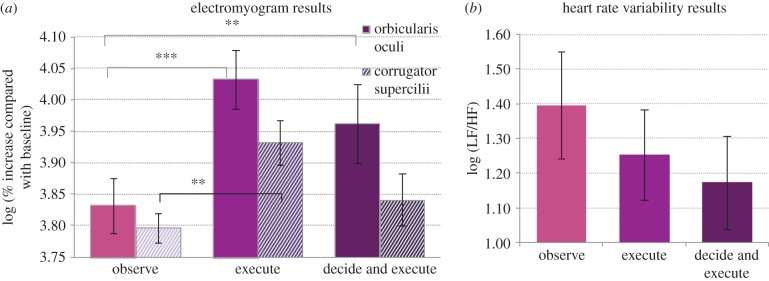Figure 3.

Physiological results of experiment 1. The results have been calculated for both pain and unpleasantness ratings. (a) The orbicularis oculi, the muscle that raises the cheek during facial expression of pain, was more contracted when participants only executed or decided and executed the action than when they passively observed the actor's facial expression of pain. The corrugator supercilii (frowning) was significantly more contracted compared with the ‘observe’ condition only when participants executed the action. (b) The ratio low frequency/high frequency (LF/HF) of the heart rate variability was significantly affected by the main factor responsibility, with a significant difference between the ‘observe’ and the ‘decide and execute’ condition. Reported values are mean ± s.e.m. **0.01 ≤ p > 0.001, ***p ≤ 0.001.
